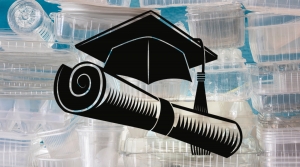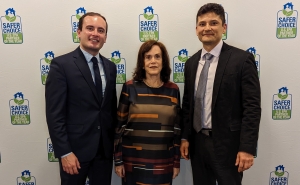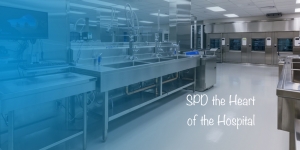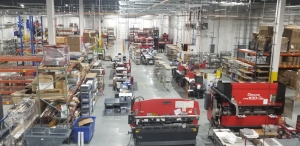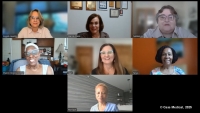Super User
Say Goodbye to “The Graduate”
Remember the scene in the Graduate when Dustin Hoffman’s future father-in-law tells him to go into PLASTICS, the growing industry at the time, one of mankind’s greatest innovations. When we started Case Medical thirty years ago manufacturing custom trays out of metal, we were told the same thing. PLASTIC was the best material for all things in our industry…
Understanding the Forest for the Trees
Sometimes we get too involved in the details of a problem to look at the situation as a whole. Few recent scientific discoveries have captured the public’s imagination quite like the wood-wide web — a wispy network of fungal filaments hypothesized to shuttle nutrients and information through the soil and to help forests thrive. Scientists and nonscientists alike have posited that shared fungal networks are ubiquitous in forests around the world...
Case Medical Named U.S. EPA Safer Choice Partner of the Year for 2022
Halloween Scary Movie
It is late October, a time when apples are pressed into cider, leaves turn to vibrant autumn colors and Halloween horror movies scare and thrill audiences. While the names of monsters, ghosts and ghouls in these movies change, there are some recurring themes that are common to all of them including dangers lurking in hidden places, unexpected twists, secret weapons and of course, sequels. In a horror movie starring SPD professionals ...
Avoid Failed Cycles with a Little Science
There's a lot to be learned from food science that can be applied to reprocessing medical devices. For example, you should never put meat into a cold pan before cooking, because the meat and even the oil will then stick and burn. Rather pre-heat your cookware before putting anything in it. The same principle of pre-heating holds true for sterilization, if you want to ensure a good outcome...
Celebrating Sterile Processing Week
Thank You! Case Medical would like to take a moment to thank every Sterile Processing professional for the heart and soul you put into your work each day. With your tireless dedication, patients can count on you to keep them safe during a medical procedure with clean, properly processed sterile instruments. With your unwavering adherence to industry...
- Best Pratices
- healthcare
- cleaners
- Reprocessing
- Infection Prevention
- sustainability
- safer choice
- instrument chemistries
- Sterilization Containers
- reusable packaging
- best practices
- Innovation
- Enzymatic Cleaners
- multienzymatic detergent
- green chemistries
- empowerment
- women
- Sterile Processing
- manufacturing
- manufacturing day
- SPD week
- spd
Trailblazing Women in Manufacturing
Traditionally, women were trained to be teachers, nurses, members of the helping profession, supporting their male leaders. Then things changed during WWII when Rosie the Riveter was called by our country in crisis to contribute to manufacturing necessary equipment when our male population went to war...
- Best Pratices
- healthcare
- cleaners
- Reprocessing
- Infection Prevention
- sustainability
- safer choice
- instrument chemistries
- cleanser
- germicides
- Sterilization Containers
- reusable packaging
- best practices
- Innovation
- Enzymatic Cleaners
- multienzymatic detergent
- cleaning
- environment
- climate change
- green chemistries
- manufacturing
- stem
- empowerment
- women
- NJMEP
- manufacturing day
- made in New Jersey
Case Medical Celebrates a Milestone; 30 Years and Counting
Life's way too short to waste time on things you'd rather say “no” to. It's like a train on a tight schedule in the blink of an eye it'll pass you by. Case Medical’s thirty years in health care has been pretty remarkable, given economic ups and downs, supply chain challenges, two floods, a pandemic, and sometimes competitive gaslighting. With that said, Case Medical remains resilient, forward looking, and optimistic.
Low Temp Sterilization Failures And How to Avoid Them
Have you ever noticed as you’re waiting to board a flight that the pilot will do a walk around of the plane. He’ll look at the front wheels, walk underneath and shine a flashlight into an open compartment, take a moment to inspect the fuel connection and then the wings. The pre-flight checklist is done so the pilot knows the plane is safe to fly it's one of the reasons flying is so safe.
Is Education Really Power? In A Word... YES
Education lays the groundwork needed to feel confident in our abilities and helps us find our passions in life. If you think back to when you’re just learning a new task it can seem quite overwhelming. Thirty years ago, when Case Medical was just getting started making our first trays seemed almost impossible, but we kept at it...


